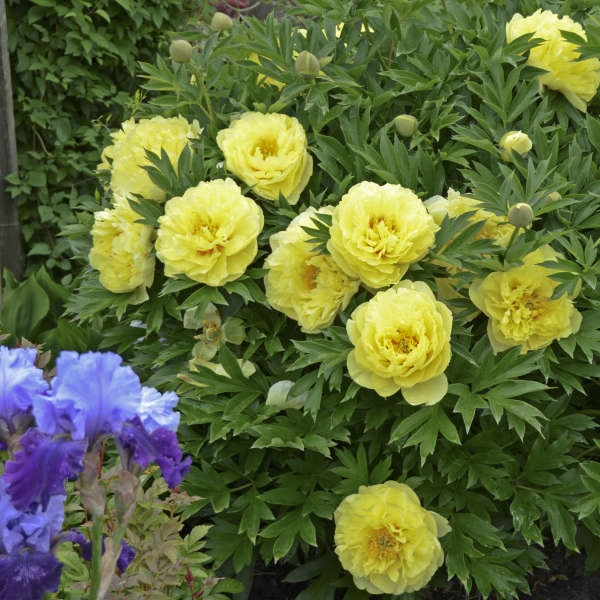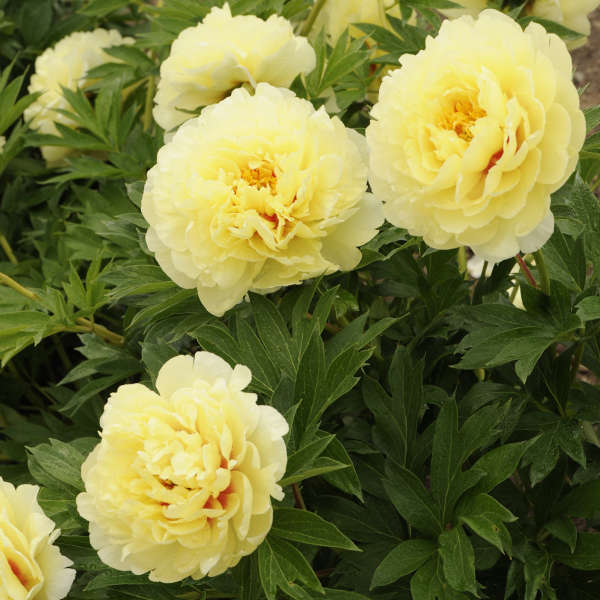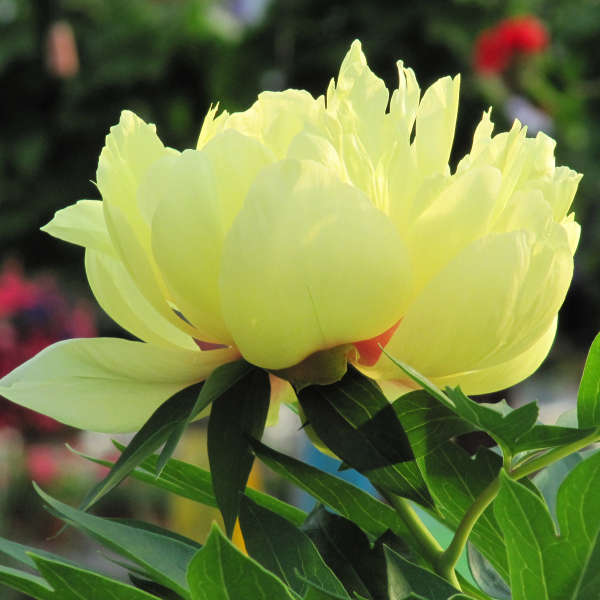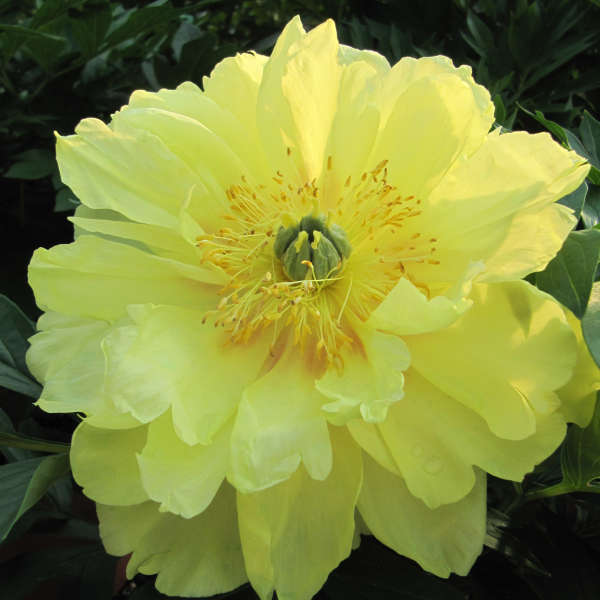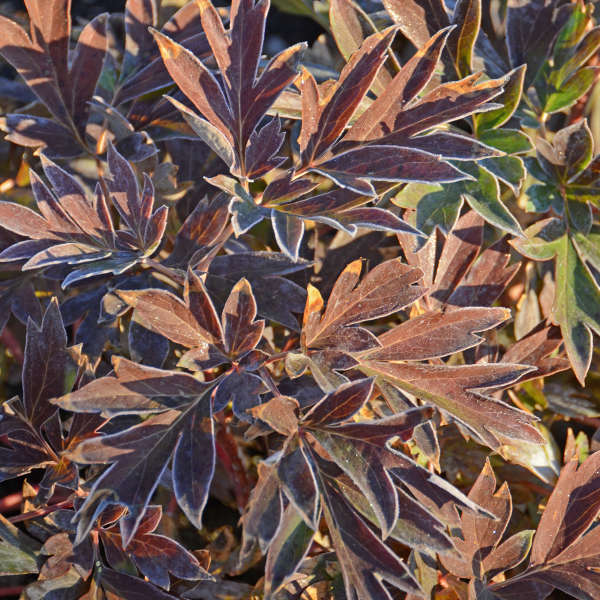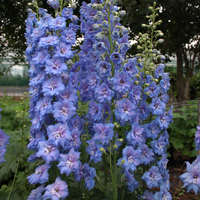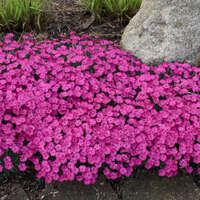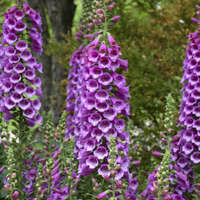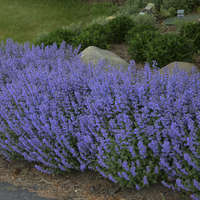Paeonia 'Bartzella'
Common Name: Intersectional Peony
Considered by many to be Roger Anderson’s best Intersectional Peony introduction. We have to agree, this plant gets a gold star in our book!
A mature plant of ‘Bartzella’ is incredibly elegant looking, with flowers neatly spaced on the top and sides of the clump. Established clumps can produce 80 or more flowers apiece! The semi-double to double, pastel yellow flowers have a small rose purple flare in the center and a pronounced sweet fragrance. They measure 6-8" across on average.
Healthy green foliage similar to that of a tree peony forms an impressively sturdy clump to 3' tall and wide. Unlike some garden peonies, the foliage of this plant looks great from spring through fall and is substantial enough to be grown in place of a small shrub in the landscape.
About Intersectional Peonies
Intersectional peonies are a relatively new class of Paeonia created by crossing herbaceous garden types with woody tree types. They are often called “Itoh Peonies” because the original cross was first made successfully by Japanese nurseryman Mr. Toichi Itoh in 1948. Sadly, he passed away before ever seeing one of his crosses bloom. Since that time, other hybridizers have continued his work including American breeder Roger Anderson.
Intersectional Peonies offer the best qualities of both garden and tree peonies combined including:
- Very large, tree peony-like flowers in colors not previously seen in herbaceous types
- Healthy, herbaceous foliage similar to tree peonies but with a robust, bushy habit that does not require staking
- Strong, herbaceous stems that hold the flowers upright even after a heavy rain; makes a better landscape plant than older herbaceous peonies
- A longer bloom time due to additional flowers being produced on side shoots
- Extreme winter hardiness like herbaceous types but with increased vigor
Grade #1 Bare Root |
